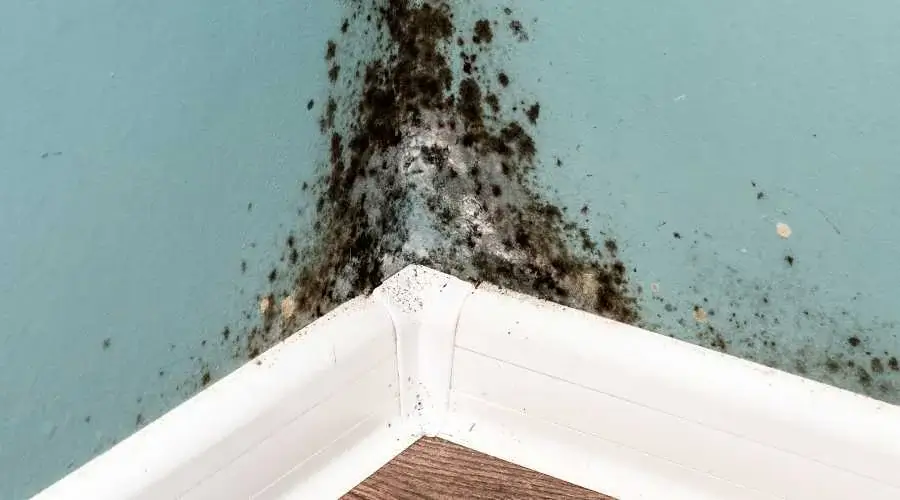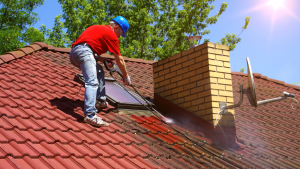In Jersey City, NJ, moisture is one of the biggest threats to stucco homes. This holds true for the rest of the northeastern United States as well because of its humid environment. If stucco is not installed correctly, your inside walls may get moist.
This stored moisture may cause fungus, mold, and mildew to develop. If it reaches your home’s wooden structure, it can even start to rot the inside of your walls.
Utilizing skilled stucco installers might prevent harm to your home. They will know how to put up security and moisture control measures.
In this post, the differences between moisture management and protection will be covered. Additionally, you’ll learn why combining the two is the best way to secure your home.
Moisture Management
Moisture management refers to your wall system’s capacity to expel any moisture that penetrates inside of it. A porous exterior construction material, modern stucco . As a consequence, moisture may leak into the hollow of the wall from the stucco’s surface.
And materials other than stucco also allow moisture to enter. Always act as if some moisture will ultimately get into your walls. This is true whether the veneer, siding, or stucco on the outside of your property. What happens to the moisture after it has entered the building using your wall system?
In general, there are only two ways to get rid of moisture from within your walls. The fluid may either evaporate from the top or bottom of the wall, or it may do both.
Weep Screeds
Weep screeds, drainage pores at the base of walls where moisture may “weep” out, are present. They are necessary for any new siding, stone, and brick veneer, stucco, installations.
Air Vents
Through air vents, moisture that has been trapped in the wall may be dried out. The weep screed at the wall base serves as an air vent. But sometimes there are openings at the top of the walls.
These additional air vents result in a greater airflow. The improved ventilation has allowed moisture to evaporatively escape through the top of the wall. They could, however, provide the reverse outcome if they are not configured appropriately. The last thing you want is for the vents that are meant to dry out your wall cavities to let moisture in.
Moisture Protection
Moisture protection keeps the rest of your home and your walls dry. For the sake of clarity, we’ll refer to keeping moisture out of your walls as external protection. Interior protection is what we’ll refer to as keeping moisture from entering your home.
External Moisture Protection
Your walls might be dried out employing moisture management. Exterior moisture protection, on the other hand, stops it from ever penetrating your walls. Draining the moisture from your walls is the best thing you can do. having absolutely no dampness in your walls.
Gutter systems are a common kind of exterior moisture prevention. They steer rainwater away from the outside walls of your house and toward the ground. Without gutters, rainwater would pour down your walls and ultimately seep through.
The external paint of your house may also help to keep moisture out. For example, elastomeric paint waterproofs the stucco surface. This paint also makes it less likely for moisture to seep back through the stucco surface.
Internal Moisture Protection
There is yet another line of protection when moisture seeps into your walls. This layer is composed of a water-resistive barrier (WRB) and flashing. Both the WRB and flashing prevent moisture from entering your home’s interior.
You may not be aware of it, but you already have some familiarity with WRBs. You’ll see this substance covering the building’s framework. It often appears in green, but it also has a broad variety of different colors, depending on the maker.
WRBs prevent moisture from getting into contact with the timber framework of your house. However, they are not impenetrable. If water is able to get past the barrier, rot may begin to appear.
Flashing directs water away from windows, doors, and other access points. The outside openings of your house are vulnerable to moisture intrusion. Improper flashing may worsen the problem by drawing moisture to these exposed areas.
Stucco Installation Done Right
The best results are obtained when moisture management and protection are combined. Given that we are experienced stucco contractors, we are aware of the need of moisture management and preservation. During cleaning projects, we often see the serious consequences that defective installations may have.
Your walls will get wet if the moisture is not controlled. This will cause serious damage over time. Furthermore, if it isn’t shielded from moisture, even a little quantity of water might lead to serious problems. If the water can’t get out, it will leak into your home.
Any part of the system may become overburdened by too much moisture on its own. Therefore, it is essential to coordinate moisture management and protection. They both support each other’s weakened regions.
Water will keep seeping through your walls. However, with these safeguards in place, you may be sure that it will only occur sometimes. Additionally, these little water pools will swiftly evaporate or drain through the wall hollow.
CMB Jersey City Stucco & EIFS Repair, Greater Jersey City, NJ Trusted Stucco Experts
Do your walls have water damage from the interior of your home spilling into them? Have you seen any mold or mildew growth on your outside walls? If so, a stucco inspection is required.
A thorough assessment may help identify the sources of damage and outline the necessary remedy activity. If there is an issue with water intrusion, remediation is almost always necessary. As part of cleanup, the exterior must be entirely removed and reconstructed. That includes both the moisture management system and the interior moisture protection system.
Contact CMB Jersey City Stucco & EIFS Repair to schedule an inspection. Do not wait until your home has sustained more extensive damage.




